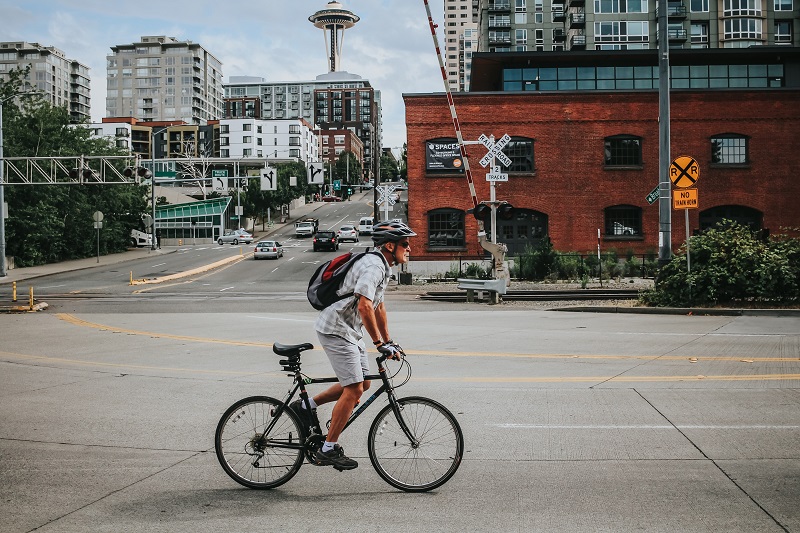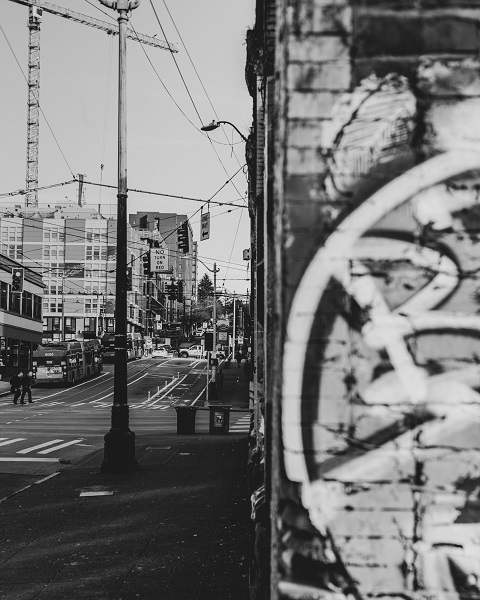Seattle Dethroned as #1 Bike-Friendly City

According to a new ranking, cities on the West Coast are the most bike-friendly, as cycling advocates strive to improve Seattle’s biking culture and safety
Seattle may no longer be the most bike-friendly city in America, but it is still ranked in the top ten in two recent rankings. A recent WalletHub analysis ranked Seattle as the 8th most bike-friendly city in the US, while Anytime Estimate placed the Emerald City in the 10th spot.
The rankings relied on a variety of metrics to determine a city’s bike-friendliness, such as geographic traversability, the number of cyclists commuting by bike, and access to trails and bike shops.
Portland outranked Seattle on both Wallethub and Anytime Estimate’s lists, and California had the most cities in the top 20 of any state, with sunny San Francisco ranking highest among California’s cities.
While Seattle remains bike-friendly, cycling advocates say there is still room for improvement
The title of “best bike city in America” was bestowed upon Seattle in 2018 by Bicycling Magazine, and for good reason. Cycling is a way of life in the Coffee Capital.
However, everything can be improved, and cycling advocates have suggested that Seattle’s biking infrastructure could be enhanced. Avid bikers believe that increased bike network connectivity throughout the city, as well as infrastructure that separates drivers and bikers, could benefit Seattle’s cyclists. In addition, certain neighborhoods in Seattle lack infrastructure, posing a safety issue and disproportionately affecting people of color and lower-income populations, as The Seattle Times points out.

According to a new study out of Boston and Harvard University, Black and Hispanic bicyclists are more likely to die while biking than White people. For every 100 million miles traveled, there are 34 deaths among Black bicyclists compared to 7.5 deaths for white bicyclists, says People for Bikes. One cause is that White cyclists have greater access to long, connected networks of “low-stress” cycling routes. As People for Bikes points out, Black communities receive less investment in transit and protected bike lanes, tend to be less walkable, and have fewer well-maintained sidewalks and crosswalks with inadequate lighting.
Concerns about safety in the aftermath of bike-related fatalities
Seattle City Councilmember Tammy J. Morales is calling for increased street safety plans after the death of a cyclist in May. Just this week, another cyclist died in a crash next to West Seattle low bridge.
“These fatalities are completely unacceptable because they are completely avoidable,” she said. “There is no excuse for not increasing the safety of our streets and sidewalks for the people of Seattle. No excuse. None. Even in parts of the city where industry thrives, there will be people who cannot or choose not to drive in the city. They deserve to be safe.”
“The safety of Seattleites is at risk, especially if we don’t make the investments in safety that we’ve been talking about for the past decade: protected bike infrastructure, sidewalk improvements, ADA compliance, and more,” she wrote on Twitter. “As part of Vision Zero, we have safety measures that have already been designed. I’m not interested in hearing about any more studies.” Vision Zero, as Morales noted, is a strategy to eliminate all traffic fatalities and serious injuries while increasing safe, healthy, and equitable mobility.
The pandemic changed biking for the long-term, experts say
The popularity of biking skyrocketed during the pandemic, especially as people sought to avoid public transportation or relieve stress – and it shows no sign of slowing down, according to Research and Markets. As consumers become more interested in maintaining a healthy lifestyle and having access to technological advancements and new products, the global market for bicycles is expected to reach $78 billion by 2026. The environmental benefits and rising fuel and energy prices are also increasing the enthusiasm for cycling.
Courtney Rehfeldt has worked in the broadcasting media industry since 2007 and has freelanced since 2012. Her work has been featured in Age of Awareness, Times Beacon Record, The New York Times, and she has an upcoming piece in Slate. She studied yoga & meditation under Beryl Bender Birch at The Hard & The Soft Yoga Institute. She enjoys hiking, being outdoors, and is an avid reader. Courtney has a BA in Media & Communications studies.



